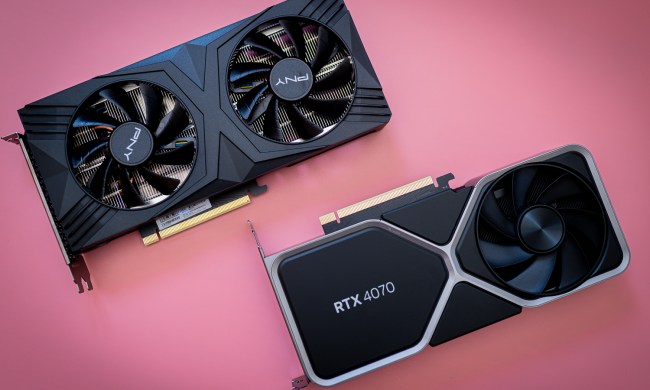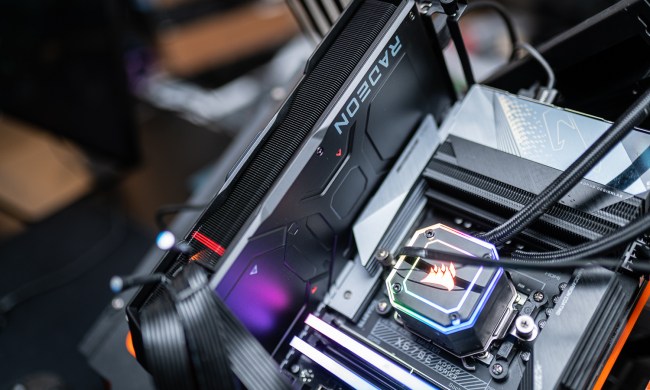
The deal with this listing is that it doesn’t say anything outside of it supporting CrossFire mode, a PCI Express 3.0 bus, and DirectX 12. However, that hasn’t stopped observers from assuming that the card is based on AMD’s upcoming Vega graphics chip design rather than the current Polaris architecture used in the Radeon RX 460, RX 470, and RX 480 cards now on the market.
Here are the unofficial hardware specs that have leaked thus far regarding the four Vega variants:
| Vega 10 | Vega 10 Dual | Vega 11 | Vega 20 | |
| Process node: | 14nm FinFET | 14nm FinFET | 14nm FinFET | 7nm FinFET |
| Cores: | 4,096 | 8,192 | 2,304+ | 4,096 |
| Base clock: | 1,465MHz | 1,100MHz+ | unknown | 1,465MHz+ |
| Boost clock: | unknown | unknown | unknown | unknown |
| Memory: | 16GB HBM2 | 32GB HBM2 | unknown | 32GB HBM2 |
| Memory bus width: | 4,096-bit | 4,096-bit x2 | unknown | 4,096-bit |
| Memory bandwidth: | 512GB per second | 1TB per second | unknown | 1TB per second |
| Thermal design power: | 225 watts | 300 watts | unknown | 150 to 300 watts |
| Performance: | 12 TFLOPS | 18 to 23TFLOPS | unknown | 12 TFLOPS |
What doesn’t make sense is the idea that AMD would introduce a new graphics chip architecture in the Radeon RX 400 series. Presumably AMD would launch a whole new series of cards based on its Vega design for the high-end “enthusiast” PC gaming market while the Radeon RX 400 Series continues to feed the general PC market. That said, the image provided in the RX 490 listing (which looks to be the RX 480) is undoubtedly a placeholder, and the product could easily be based on AMD’s dual-GPU Polaris 10 design that’s slated to arrive this month.
We don’t know much about the dual version of Polaris 10, only that it’s expected to have a performance of 11 TFLOPS, a base clock speed of 1,200MHz, and around 4,608 cores. Like the rest of the Polaris lineup, the dual version will be based on 14nm process technology that uses fin-shaped FinFET transistors.
The Radeon RX 490 listing shows up after reports surfaced regarding a Pro 490 model slated for Apple Mac Pro computers. Like the consumer model, this card is supposedly based on AMD’s Vega graphics chip design, too, and is scheduled to arrive in May 2017. AMD previously stated that cards based on its Vega design won’t arrive until the first quarter of 2017, so the Radeon Pro 490 rumor makes more sense than the rumored consumer-focused RX 490 launch window.
Here are a few alleged numbers comparing the performance of the Radeon Pro 490 against Nvidia’s GeForce GTX 1070:
| Radeon Pro 490 | Geforce GTX 1070 | |
| 3DMark FS Ultra: | 5,000 | 4,529 |
| 3DMark FS Extreme: | 9,490 | 8,966 |
| 3DMark FS Time Spy: | 6,510 | 5,749 |
The thing to keep in mind is that AMD typically releases Pro variants of their cards after the consumer models hit the streets. If that’s the case here, then AMD appears to be still on target to release Vega-based RX models in the first quarter of 2017 followed by the Pro versions in the second quarter. But, as always, everything here is mere rumor, assumption, and “leaks” until AMD officially flashes us with its Vega-based goodness. Hopefully we’ll get a glimpse in a few weeks.



